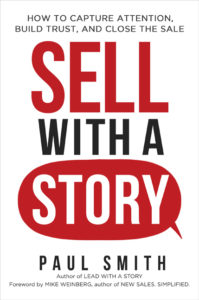Podcast: Play in new window | Download | Embed
Subscribe: RSS
Podcast (parenting-with-a-story-podcast-series): Play in new window | Download | Embed
Subscribe: RSS
 Sometimes being open-minded doesn’t mean having to admit being wrong. It just means admitting that someone else might be right. Those aren’t the same thing. And to do that, you have to start by seeing things from that other person’s perspective, which doesn’t come easily or naturally to most people.
Sometimes being open-minded doesn’t mean having to admit being wrong. It just means admitting that someone else might be right. Those aren’t the same thing. And to do that, you have to start by seeing things from that other person’s perspective, which doesn’t come easily or naturally to most people.
Looking at things from a different angle was exactly the lesson Luigi Ciuti learned in quite an unexpected place: a college course on statistics. It was his first year in college, at the University La Sapienza in Rome, Italy. Growing up in Rome, he was used to a traditional grading system in school. Grades on several tests during the quarter plus homework and term papers all combined to yield your final grade in the course. But in his university statistics class, the entire course grade was based on the final exam. So his stress level was unusually high on exam day.
And if that wasn’t enough, the other strange thing was that each student sat for the test individually, one after another. That meant Luigi was alone in the room with the professor looking over his shoulder, commenting on his work as he tackled each problem. Fortunately, throughout most of the test, all Luigi heard and saw were occasional grunts of approval and head nods. But that all changed when he got to a problem where he had to solve a matrix equation that involved division.
In mathematics, a matrix is a set of numbers arranged in a square grid with the same number of rows as columns. (Think of a tic-tac-toe or sudoku game with all the boxes filled in.) It turns out a matrix can be used in most of the same ways as any other number in mathematics. You can use them in equations with regular numbers, variables, or even other matrices, where they can be added, subtracted, or multiplied. But the one thing you cannot do with a matrix is divide by it. So mathematicians have invented a trick. Just like dividing by three is the same thing as multiplying by one-third, you can divide by a matrix by taking the “inverse” of the matrix first and then multiplying by it. So that’s exactly what Luigi was attempting to do when the nods of approval from his professor suddenly stopped.
Inverting a matrix isn’t as simple as just flipping it upside down. There’s a complex and tedious set of steps you have to go through to calculate it. As Luigi started that process, he noticed his professor scowling at him. “I could tell he was becoming agitated,” Luigi explained. “‘Wait, back up. You’re doing it wrong,’ he said several times.”
Now Luigi was really starting to sweat as he struggled to figure out what he was doing wrong. It was well known that this professor would throw students out of an exam if they couldn’t progress according to his expectations. But as much as he tried, Luigi was still convinced he was doing it right. But he also knew his professor wouldn’t be so adamant if he wasn’t sure, too. Luigi looked back and forth from the exam to his scowling professor.
Is it possible that we’re both right,” he thought, “and he’s just looking at this from a different angle?”
That turned out to be the right question to ask.
That’s when Luigi remembered another oddity of matrix math. In finding the inverse of a matrix, there’s more than one way to do it. You can start off horizontally, going by rows first, or you can start vertically, going down the columns first. Luigi was used to doing the problem vertically. His professor, it turns out, liked doing them horizontally. He was literally looking at the problem from a different angle, ninety degrees different to be exact. If the professor had waited until Luigi was done with the problem, he would have seen the correct answer. But the intermediate steps looked all wrong to him.
So Luigi stopped working and explained his revelation to the professor. “I’m doing this vertically. I think you’re expecting me to do it horizontally. Right?”
The professor’s face froze. After a brief, and perhaps embarrassed, reflection, the professor said, “You’re right. Go ahead.” Luigi completed the problem, and the entire exam, with a new sense of confidence. And he ended up earning the highest marks in the class.
In the years since Luigi finished his degree and went into the working world, he hasn’t found many occasions where he’s needed to solve a matrix equation. But he’s encountered countless uses for asking the question “Is it possible we’re both right? Are they just looking at this from a different angle?”
Life’s not like the simple math we learned in grade school, where one plus one always equals two. It’s more like inverting a matrix: challenging, complicated, and with more than one way to get the right answer. When embroiled in a disagreement with someone, ask the same questions Luigi did. You’ll save yourself a lot of stress.
As with all of these stories, I encourage you to share this with your kids, and then have a discussion about it. Here are some questions to get you started.
- How do you think the professor felt when he realized Luigi was doing the problem right after all?
- What’s another way the professor could have told Luigi he might be doing the problem wrong without sounding so sure of himself?
- How might the story have ended if the professor had insisted his way of solving the problem was the only correct way?
- Think of the last argument you had with someone, especially their side of the argument. Is it possible you were both right?
- What’s an example of a situation where there really is only one right way to do something?
[You can find this and over 100 other character-building stories in my book, Parenting with a Story.]
—
 Paul Smith is one of the world’s leading experts on business storytelling. He’s a keynote speaker, storytelling coach, and bestselling author of the books Lead with a Story, Parenting with a Story, and Sell with a Story.
Paul Smith is one of the world’s leading experts on business storytelling. He’s a keynote speaker, storytelling coach, and bestselling author of the books Lead with a Story, Parenting with a Story, and Sell with a Story.


 Connect with him via email here.
Connect with him via email here.
Follow him on Facebook, LinkedIn, Twitter, and Instagram.
Sign up for his newsletter here to get one new story a week delivered to your inbox.


Thank you for this story especially at this time. May we all realize that often we are simply seeing something from a different angle and we are both correct in what we see. The goal is always to accept to see from a different view is OK. That’s been a true challenge the last several months. Whew! Here’s to trying!
Great story Paul, many thanks for sharing it with me. – Barry.